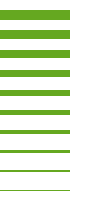https://doi.io-warnemuende.de/10.12754/data-2021-0006
doi:10.12754/data-2021-0006
© Author(s) 2021. This work is distributed
under "CC-BY-ND 4.0 License"
Hypoxic and euxinic conditions in the Baltic Sea 1969-2016 - a seasonal to decadal spatial analysis
Contributor(s): Nausch, Günther [Researcher]; Ruth, Thomas [Researcher]; Zabel, Jakob [Researcher]; Plangg, Markus [Researcher]; Andersson, Lars [Researcher]; Viktorsson, Lena [Researcher]; Lysiak-Pastuszak, Elzbieta [Researcher]; Feistel, Rainer [Researcher]; Nehring, Dietwart [Researcher]; Matthäus, Wolfgang [Researcher]; Meier, H. E. Markus [Researcher]
Abstract. The dataset consists of calculations of hypoxic and euxinic area of the Baltic Sea in the timespan 1969 to 2016. Since 1954 consequent cruises to investigate the environmental status and long-term variability of the Baltic Sea’s ecosystem have started. They cover a large extent of the Baltic Sea, taking measurements of physical, chemical and biological parameters. The analyzed dataset consists of up to 75 long-term data stations spanning from the western Baltic Sea to the central deep basins. As a backbone served the IOW data collection of five cruises per year at fixed time slots (January-February, March, April-May, July-August, November) to cover the annual cycle. Data gaps in local regions in this pattern of cruises, caused by stormy weather and other difficulties could be complemented by Swedish data of the Swedish Meteorological and Hydrological Institute (SMHI) in most of the central basins and Polish data of the Institute of Meteorology and Water Management (IMGW) in the Gdansk Basin since 1980. In earlier times the Gdansk Basin was as well sampled by cruises of IOW’s forerunner the Institute for Marine Science of the German Democratic Republic (GDR). All data was quality checked, formats homogenized and imported in IOW’s database to use programmed routines for further processing to mapping products. For the interpolation process an automated database request excerpts from each cruise the water depth levels where laboratory results get hypoxic and euxinic (dissolved oxygen levels below 2 ml/l and hydrogen sulphide was detected) as well as the bottom values of these parameters. This so-called level file is geostatistical interpolated to an 1 nautical mile grid, spreading the depth levels horizontally up to the margins of the basins. This covered area was exported as shape file (1 nm raster and polygons) for further processing in a geographical information system (ArcGIS). In ArcGIS all of this shape files were transformed from geodetic coordinates (WGS84) to projected UTM coordinates (ETRS89) to use metric units for spatial calculations in high accuracy. Afterwards area calculations at all polygon shape files. In a next step the total areas were sliced by the territorial margins of the basins (Arkona Basin, Bornholm Basin, Slupsk Channel, Gdansk Basin, eastern Gotland Basin, northern Gotland Basin and western Gotland Basin) in subareas and areas were recalculated. A MATLAB script excerpts all these values from each attribute table of the shape files and list them in a text file, which builds the database for further statistical analysis. The first time-step where all basins are sufficiently covered by dissolved oxygen measurements for an area-wide analysis of the hypoxic situation in the Baltic Sea was in October 1969. The threshold for an adequate spatial data coverage was a minimum of three measured stations in each of the seven basins /subareas. This quality check passed 195 datasets for hypoxic and 181 datasets for evaluating euxinic regions which were considered for the statistical analysis of hypoxic and euxinic area. This basical dataset was prepared and is published as supplement of this study. Three Excelsheets with hypoxic are, euxinic area and derived statistics are provided.
Citation
Download
GeoLocation(s)
- The Baltic Sea - southern to central basins
